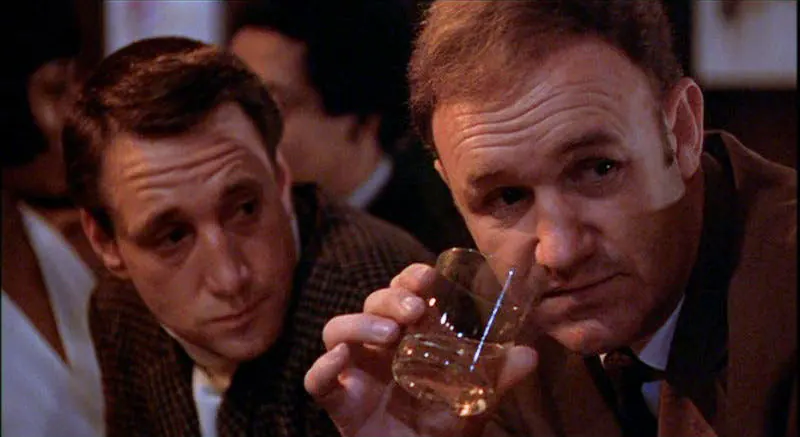The French Connection: Business or Pleasure?
Gene Hackman As Popeye Doyle
With his masterpieces THE EXORCIST and THE FRENCH CONNECTION, William Friedkin came out as one of the seminal directors of that decade. Each have a profound cinematic quality, capturing what was at the same time captivating and disillusioning about the decade. Both movies were R-rated, and to this day, THE FRENCH CONNECTION ranks in the Top 50 for all-time adjusted box office in that category.
ENERGY OF AN ERA
Great movies always start with a great script, but the best directors add a texture that no script can suggest or predict, let alone prescribe. THE FRENCH CONNECTION is a prime example of a film with that elusive quality. Any cops-and-robbers story can be filmed in a million different ways. Look at Michael Mann’s HEAT, another movie based on a legendary detective, and you’ll understand how important the mark of the director is in both these cases.
THE FRENCH CONNECTION has this elegant, naturalistic, quasi-European flavour to it. An event movie with an almost arthouse sensibility. And Hackman. That man can’t do anything wrong. He is downright stellar in the lead role as Jimmy Popeye Doyle.
CINEMATIC SPLENDOR
When people talk about the movie, it is often in relation to the mythical car chase. But there is so much more to this picture that makes it unique, irresistible and timeless. For instance, much like Jimmy Doyle in the movie, Friedkin didn’t separate work and life very well. Or rather: truth and fiction. None of the people in the background are extras. They are actual New York residents going about their day. And the traffic jam on the Brooklyn Bridge is real. The filmmakers blocked the bridge - without permits. Friedkin took his documentary approach to the extreme: often the camera operator had to guess what was going to happen, and where.
The scene where Jimmy first lays his eye on baddie Sal Boca, is set in the actual legendary Copacabana nightclub, with the real Three Degrees.

THE COPACABANA SCENE
The scene opens with a live rendition of the rhythm & blues song “Everybody Gets To Go To The Moon”. The song plays throughout most of the scene as a counterpoint to the action. When Jimmy enters the club, he looks at the band, swaying along with the music. For a short moment, it seems he is truly relaxing, but Popeye Doyle always mixes business with pleasure.
Friedkin uses image, sound and music to picture what is going on in Jimmy’s mind. The music drops, and a high-pitched sound takes over. We zoom in on Jimmy - Popeye’s unrelenting gaze. He has entered tunnel vision, and with this audio-visual trick, Friedkin forces us into Jimmy’s point of view.
Buddy Russo (Roy Scheider) says “I thought we came here to buy me a drink.” He has no idea what he is in for. The scene starts a sequence that will take the duo on the trail of the suspects until dawn - and beyond.
Jimmy Doyle knows no bounds, and he will take Russo on his path, into the darkness.
Karel Segers
Karel Segers wrote his first produced screenplay at age 17. Today he is a story analyst, script editor and producer with experience in rights acquisition, script development and production. His
screenwriting classes have trained writers in Australia, Europe, Asia and the Middle East, and his clients include international award-winning filmmakers as well as three Academy Award nominees.
Karel is the founder of
The Story Department and he ranks in the world's Top 10 of most influential people for screenwriting on Twitter.